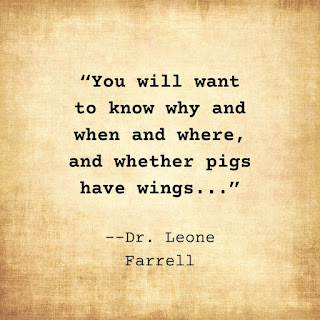by Terrie Todd
Everyone has heard of Dr. Jonas Salk, the American virologist who developed one of the first successful polio vaccines. But have you heard of Dr. Leone Farrell?
If we found the Covid-19 pandemic frightening, imagine the early 1950s when children everywhere were suddenly unable to walk, some dying within days of being stricken. At least 9,000 Canadian children were infected with the polio virus in 1953. Some of the survivors were crippled for life. Some ended up in iron lungs.
 |
| An iron lung patient in the 1950s. Photo from Canva. |
So naturally, when Dr. Salk developed his vaccine in 1952, hope began to grow. The potential vaccine was untested, however, largely because no method existed to develop enough vaccine for large-scale testing.
Enter Dr. Farrell. Born in 1904 in a farming community near Monkland, Ontario, and raised in Toronto, Leone Norwood Farrell graduated from Parkdale Collegiate Institute, earning a scholarship in Science and academic prizes in English and History. She studied Chemistry at the University of Toronto, completing her Master’s degree in 1929. Her master’s work led to a research project on the microbiology of honey. This was followed by a year at the London School of Hygiene and Tropical Medicine in the UK, studying the metabolism of fungi in penicillin. After returning to Canada, she became one of a small group of women of her generation to earn a Ph.D. in the sciences by completing her doctorate in biochemistry in 1933. Although she was a strong supporter of women in the lab, she did not consider herself a feminist. Colleagues described her as a classy dresser, most often wearing high heels and a silk blouse beneath her lab coat.
 |
| Dr. Leone Farrell, Ph.D. (Wikipedia) |
She joined the staff at Connaught Medical Research Laboratories and was an experienced researcher by the time the polio trials started. She had developed what became known as the “Toronto Method,” (I can’t help thinking that if she’d been male, it would be known as the “Farrell Method”) which was a new way of cultivating bacteria in large bottles which were gently rocked to keep the mixture in constant motion. In the early 1940s, Farrell adapted the method for the production of the pertussis (whooping cough) vaccine on a larger scale. Her method meant vaccines could be accessed for one-tenth the cost. Farrell had spent the war years focused on the elimination of diseases like cholera and dysentery, and giving lectures to medical students and public health nurses.
 |
| Old microscope, from Canva |
But it was during the Polio pandemic when her method shone. When Connaught received the contract to produce 3,000 liters of virus fluid needed for testing, Dr. Farrell was charged not only with planning the building of labs and incubators but of training staff. During the winter of 1953-54, she and her staff worked around the clock so that each Thursday, a station wagon could pull up to the door to collect the priceless cargo. From there it went to pharmaceutical companies in the U.S. By the spring of 1954, two million children had participated in field trials of Salk’s polio vaccine and mass immunization swept across North America. Later, Leone Farrell wrote: “Miraculously, there were no poliovirus infections among the large staff involved, although I believe everyone thought at least once that they had contracted the disease.”
In a speech to women in 1959 about the qualities required
to become a good medical researcher, she said, “You will want to know why and
when and where, and whether pigs have wings… You must let your imagination take
flight, while you keep your feet on the ground.”
Sources:
100 Canadian Heroines: Famous and Forgotten Faces, by Merna Forster, Dundurn Press, 2004; Wikipedia; The Canadian Encyclopedia
Emmaleen Kimball is 14 when she becomes convinced she really belongs to a tribe of Gypsies. Why won’t anyone tell her the truth? Was the whole world out to deceive her? And more importantly, did they really think she’d never figure it out?
Bernadette Kimball is 27 with no marriage prospects in sight. And with all the men fighting overseas, that isn’t likely to change. Not that she cares. Who needs a family? Families are just one big mess of secrets and lies.
April Kimball-Madden carries the burden of a secret she promised never to share. How can she tell Emmaleen when she’s never told her own husband the truth? Joey has no idea Emmaleen isn’t really his wife’s little sister and if he ever finds out who her biological father is, it will open a can of worms so big her household will never survive.
Can these three sisters reconcile their worst fears and deepest longings before it’s too late? Will the faith they’ve been taught and the mercy they’ve been shown be enough to bring peace to their hearts even in the midst of war?
April’s Promise was short-listed in both the 2020 Word Awards & the 2020 Braun Book Awards.
Terrie Todd’s novels are set mostly in Manitoba, Canada where she lives with her husband, Jon, in Portage la Prairie. They have three adult children and five grandsons.
Follow Terrie here:
Quarterly Newsletter Sign-up




Thank you for posting today, and Happy New Year to you and your family. I love learning about Leone Farrell! Sounds like she had a sense of humor, along with her great skill and wisdom. I hope she is taught about in the schools as a worthy role model.
ReplyDelete